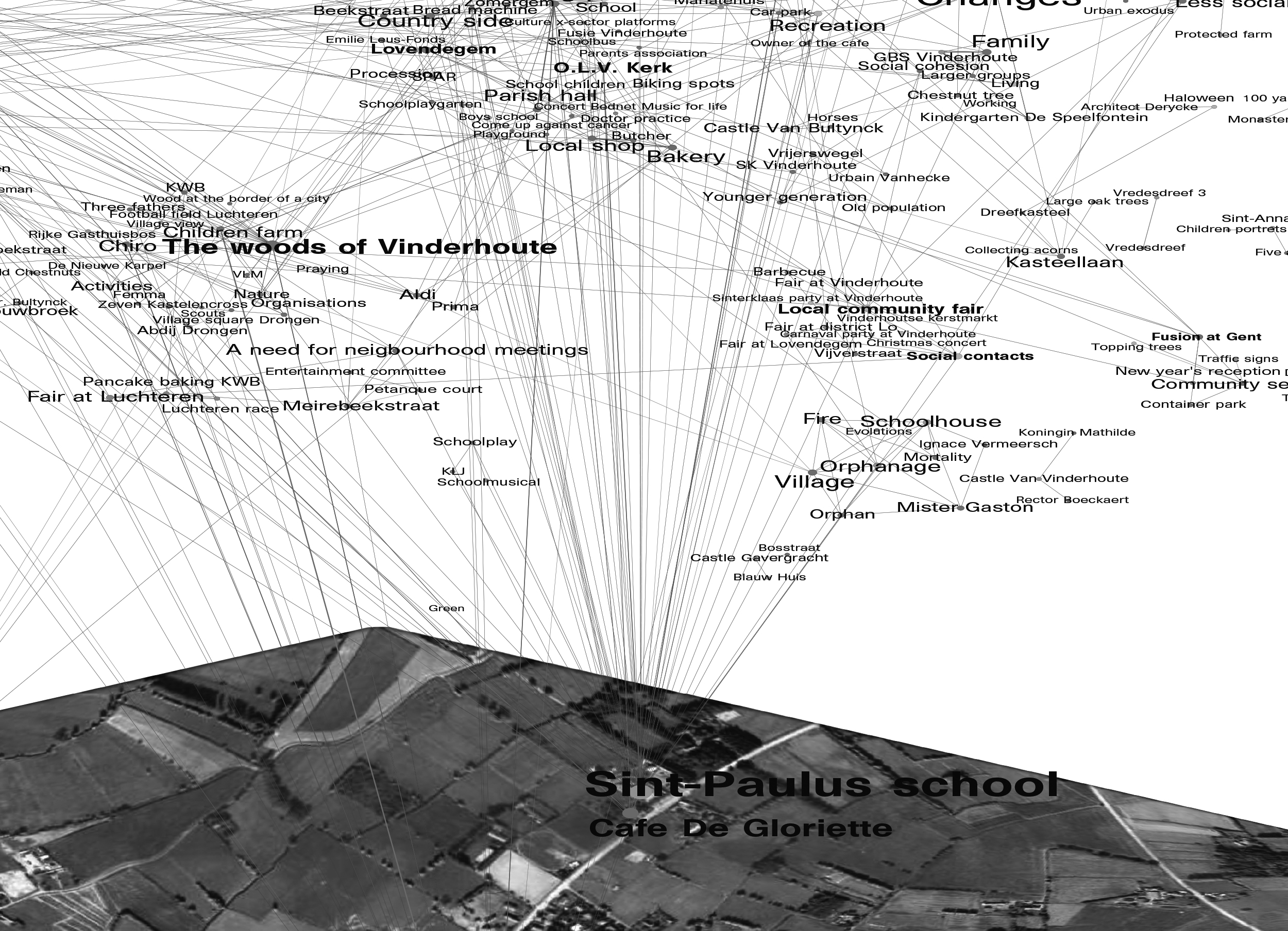Look Space! A Story of Analogous Spaces
The research of the past years resulted in two publications, Look Space! A Story of Analogous Spaces (2017) and The Matrix Project (2018).
In Look Space! A Story of Analogous Spaces I tell a story of three research tracks related to so-called analogous spaces.
We all, at times, imagine spaces in which we can move about, dream, work or play. This is the kind of feat of the imagination that is triggered by touching an object, glancing at a space, allowing one’s eyes to roam a landscape… The term ‘analogous spaces’ highlights the analogies existing between the ways in which knowledge is processed in different types of space: we can safeguard knowledge, add to it, experience it, move it to a different place, in a space that may be either an actual, material place, or a virtual one. Various approaches to these spaces present themselves. The term ‘analogous’ refers more specific to a spatiality that is, a product of communication media, and as such an integral part of our contemporary living experience.
Track 1: Network
Architecture and landscape are not just about our spatial, tangible world, which consists of material buildings and environments. They also involve the intangible universe consisting of communities, events and memory. Architecture and landscape act as catalysts for interaction between these two spheres. The result is through on site inquiries, study of the local history, topology, context, the genesis of network environments that makes aspects of a collective memory tangible. The memory float as a cloud above the landscape, some of the nodes connect with real tangible elements in that landscape.


Track 2: Matrix
We did not set out on these trails empty-handed: we were equipped with findings from earlier research projects: matrices to use as instruments, as spaces in which to manipulate complex issues. Central to the Matrix Method, developed during previous research, is the way it enables the user(s) to consider an issue either as individuals or as a group. Thanks to this specific method for examining an issue, groups can be enticed to collaborate closely and find creative solutions. We established that the use of the matrices resulted in the creation of formerly inexistent, intangible temporary public spaces shared by all participants wherein people, through the materialized matrices, are connected with the creative process that is ongoing.

Track 3: Movement
Human beings move about in rooms and in doing so create ephemeral spatial ‘shapes’. Researchers in several fields and disciplines as well as visual and performance artists, architects and designers have been investigating this phenomenon quite often the last century.
By focusing on the relation between body movements and the (virtual) space these movements generate in a physical space, we specifically examine the significance of our behavior in a given space and, by extension, our behavior in an architectural context. When we visualize and develop these spaces that spring from body movement, what we see is a space that is always present yet changes constantly and only becomes legible to all through the use of drawings and technology. An exploration of the interaction between this ‘embodied space’ and the architectural space is key in this track.
